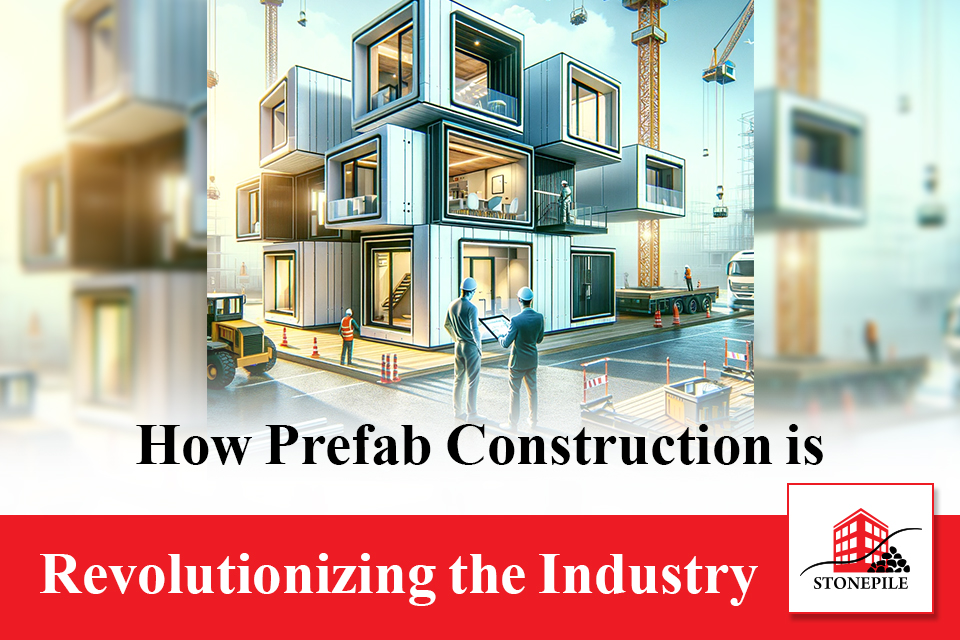Introduction
As the construction industry continues to evolve, one word rings louder than ever before: efficiency. Despite its historical roots dating back to the 19th century, prefab (short for prefabricated) construction is at the forefront of this evolution. Prefab construction involves assembling sections of a structure in a manufacturing site and then transporting them to the use location.
This efficiency-driven construction method is revolutionizing the industry, with benefits spanning from time and cost savings to sustainability and waste reduction. Let’s explore what makes prefab construction a game-changer for construction education, a construction career, and becoming a subject matter expert.
Exploring Prefab Construction Methods
Prefab construction encompasses several methods, including panelized, modular, and volumetric construction, offering diverse opportunities for those interested in specialized online construction courses.
Panelized Construction
Panelized construction involves building components, like wall panels, in a factory and shipping them to the site for assembly.
Modular Construction
In modular construction, entire sections of a building (modules) are constructed off-site and delivered for assembly. Learn about the importance of logistics from Modular Construction | It’s all about the logistics! These might include fully outfitted rooms with installed fixtures and fittings, making it a versatile option for those considering HVAC, plumbing, and electrical courses.
Volumetric Construction
Volumetric construction involves the off-site construction of three-dimensional units in a factory, offering a unique perspective for those interested in architecture and structure courses.
Case Studies Showcasing Time and Cost Savings
Projects around the world exemplify the groundbreaking applications of modular architecture. One notable example is the 326-room CitizenM Bowery Hotel in New York, proudly standing as the world’s tallest modular hotel. What sets this hotel apart is its unique modular design, where prefabricated room modules were manufactured off-site and then transported to the location for assembly. Dive deeper and Take a look behind the construction of the tallest modular hotel in the U.S. (archpaper.com). Bowery Hotel is a striking 21-story structure that showcases the versatility and efficiency of modular construction techniques.
However, not all ventures in modular construction have been smooth. The B2 Residential Building at Pacific Park in Brooklyn initially faced numerous challenges, marking it as a failed project. Yet, through resilience and innovation, these challenges were ultimately overcome, transforming the B2 Residential Building into the world’s tallest modular residential building. Collectively, these projects underscore the immense potential of modular architecture in crafting efficient and sustainable residential buildings, even in the face of initial setbacks.
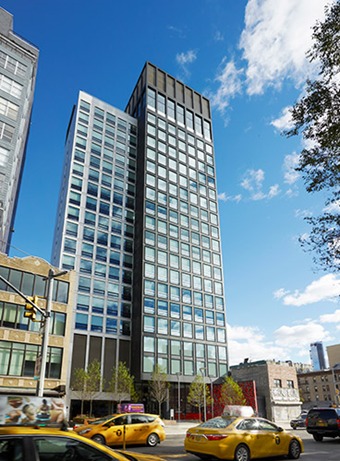 CitizenM Bowery Hotel in New York
CitizenM Bowery Hotel in New York
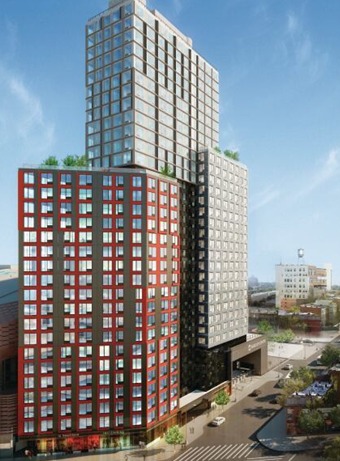 B2 Brooklyn
B2 Brooklyn
The Stack Case Study
The Stack,” a seven-story residential building in New York, showcased prefab’s speed of construction. It was completed in 10 months instead of the typical 16 months, demonstrating its potential for construction networking and connecting with construction industry leaders.
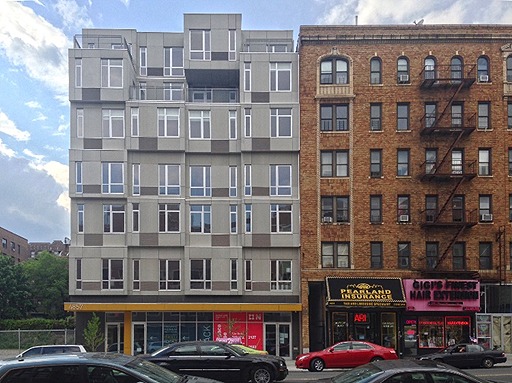 The Stack
The Stack
The Ark Case Study
“The Ark,” a student housing development in Wembley, London, built using volumetric construction, required only 27 weeks to complete, saving an estimated GBP 8 million. It’s a testament to how prefab construction aligns with industry insights and construction news.
Z Modular Case Studies
Z Modular, a leader in modular construction, consistently highlights faster construction schedules and a quicker return on investment. For instance, the AC Marriott Hotel in Oklahoma City was built using modular construction. It opened its doors to guests just 11 months after the groundbreaking, demonstrating the impact of online construction courses on practical projects.
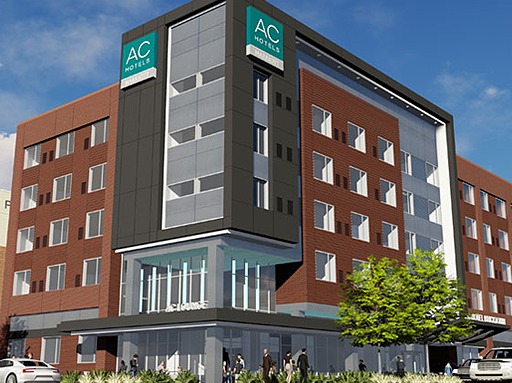 AC Marriot Hotel, Oklahama
AC Marriot Hotel, Oklahama
Creating prefab buildings that look great and work well requires careful balance. It’s about going beyond the usual idea of prefab structures and adding design elements that make them both good-looking and practical. Learn about Designing Prefab Buildings That Are Beautiful & Functional.
Benefits of Prefab Construction
Time and Cost Savings
Decreased construction time and cost savings are arguably two of the most significant advantages of prefab construction. Constructing in a controlled environment maximizes labor efficiency, and on-site delays due to weather or logistics are minimized.
With accelerated construction schedules, prefab construction enables a faster return on investment and increased predictability, offering a clear-cut edge in project scheduling. Learn more about the Improve Schedules & Budgets with Prefab from Developers | Here’s how to get your projects built faster!. This is valuable for professionals seeking professional development and establishing themselves as subject matter experts.
Quality Control
Prefab construction offers superior quality control compared to traditional methods. Components are built in a controlled environment, allowing for better supervision and adherence to standards, leading to high-quality output—essential for those aiming for construction career excellence.
Sustainability and Waste Reduction
Prefab construction is environmentally friendly, producing less waste and allowing for better precision in building parts, thus contributing to sustainability efforts in the construction industry.
Reduction in On-site
One of the biggest advantages of prefab construction is the significant reduction in on-site labor, making it financially appealing for those considering a construction career.
Mitigation of Weather Delays
Weather delays can significantly impact traditional construction projects, causing costly setbacks. However, prefab construction is less vulnerable to weather conditions, reducing the risk of project delays—crucial for those interested in construction networking and staying updated on construction news.
Challenges of Prefab Construction
Limited Site Customization:
While modular construction offers design flexibility, on-site customization may be limited once modules are fabricated.
Transportation Costs:
Shipping large modules to the construction site can incur higher transportation costs, especially for distant locations.
Lack of Skilled Labor:
Modular construction may require specialized skills that traditional construction labor may not possess, leading to potential shortages of skilled workers. Thus highlighting the importance of Construction education and training programs to address potential labor shortages.
Limited Project Size:
Large-scale projects may face limitations due to transportation constraints, potentially reducing the feasibility of modular construction for certain endeavors.
Future Trends in Prefab Construction
The future of prefab construction is promising, with technological advancements further enhancing its benefits. Integrating AI and automation is set to boost the efficiency and precision of prefab construction. Learn about the latest trends and advance your construction career and education through our newly launched modular courses.
With increasing demand for sustainable and cost-effective building solutions, the future of prefab construction looks promising. Advancements in technology, such as 3D printing and robotics, have allowed for even more efficient and customizable prefab construction methods. As a result, we can expect to see more innovative and eco-friendly buildings being constructed using prefab techniques in the near future.
Conclusion
With its manifold advantages, prefab construction is undoubtedly transforming the industry. It’s not just a fleeting trend—it’s a sustainable, efficient, and viable solution to the industry’s many challenges. For industry professionals, it’s time to embrace this innovative approach. The potential for increased efficiency, reduced costs, and improved sustainability makes prefab construction hard to ignore. The revolution is here, and it’s prefab! So, let’s embrace it and witness the construction industry’s transformation. As we continue to see advancements in technology and a greater focus on sustainability, prefab construction is set to become even more prevalent in the future. It’s an exciting time for the industry, and prefab construction is at the forefront of this evolution. Construction companies that adopt this approach will have a competitive advantage.
Explore this captivating interview on PrefabConnect’s interview with Dr. Garry Vermaas – STONEPILE llc. Stay connected for deeper conversations, insightful blogs, valuable industry insights, and the latest updates in construction news!
Source: Take a look behind the construction of the tallest modular hotel in the U.S. (archpaper.com)
Stay connected on our social media.

